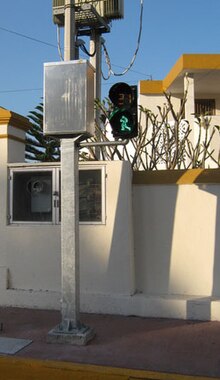
A deep-cycle battery is a battery designed to be regularly deeply discharged using most of its capacity. The term is traditionally mainly used for lead–acid batteries in the same form factor as automotive batteries; and contrasted with starter or cranking automotive batteries designed to deliver only a small part of their capacity in a short, high-current burst for starting an engine.
For lead–acid deep-cycle batteries there is an inverse correlation between the depth of discharge (DOD) of the battery and the number of charge and discharge cycles it can perform;[1] with an average depth of discharge of around 50% suggested as the best for storage vs cost.[2]
Newer technologies such as lithium-ion batteries are becoming commonplace in smaller sizes in uses such as in smartphones and laptops. The new technologies are also beginning to become common in the same form factors as automotive lead–acid batteries, although at a large price premium.[3]
- ^ "AGM Discharge Characteristics".
- ^ "Deep Cycle Battery FAQ". Windsun.com. Archived from the original on 2010-07-22. Retrieved 2011-07-20.
- ^ "Lithium RV Battery System Cost Analysis". Technomadia.com. 16 November 2011. Retrieved 7 January 2019.